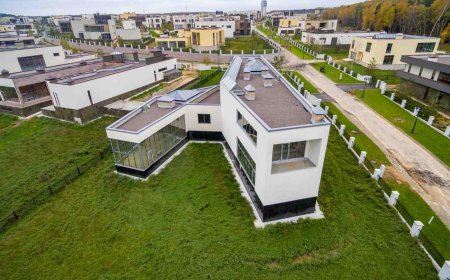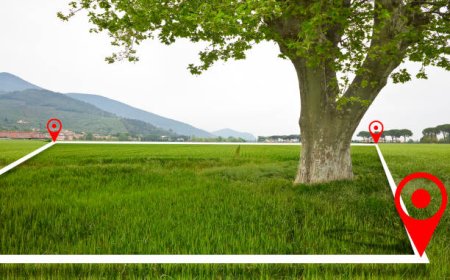How to Avoid Common Mistakes on the Everest Base Camp Trek
Experience the magic of Everest Base Camp Trek. Stunning mountain landscapes, Sherpa hospitality, and expert guides included.

If you're planning on theEverest Base Camp Trek, there are a few common mistakes youll want to avoid to have a safe and fun trip. This iconic trek is tough, even for seasoned hikers, thanks to high altitudes, rough terrain, and changing weather. Knowing what to watch out for can make a difference in your experience.
One big mistake trekkers make is underestimating altitude sickness. If you climb too fast without giving your body time to adjust, you might end up with headaches, nausea, or even more serious issues. To dodge this, stick to a slow climb, stay hydrated, and pay attention to how you're feeling. Take rest days if you need them, and talk to your doctor about any meds that could help with altitude sickness.
Another common issue is not getting ready enough with physical fitness and the right gear. The trek is tough, so it's smart to build up your strength and endurance with some training beforehand. Also, make sure your gear is right. You'll want to bring layered clothing for changing temperatures, solid hiking boots, and important stuff like a good sleeping bag and trekking poles for better comfort and safety.
Dont overlook the weather either. Trekking during the off-season can be risky. The best times to go are from March to May and September to November, when the weather is usually better and visibility is clearer. Being caught off guard by sudden weather changes can lead to trouble.
Finally, its important to respect the local culture and environment. Connecting with Sherpa communities respectfully, following Leave No Trace principles, and reducing waste helps keep the area special and preserves its cultural heritage.
With proper planning, staying informed, and being respectful, you can steer clear of these common pitfalls and make your Everest Base Camp trek an unforgettable experience.
Why Acclimatization Is Key on the Everest Base Camp Trek
Getting used to the altitude is super important to avoid altitude sickness, which is a common issue on the Everest Base Camp trek. Climbing too fast can lead to headaches, dizziness, nausea, and tiredness, which can be serious. Its best to go up gradually and take breaks to let your body adjust to the thin air. Staying hydrated, eating well, and skipping alcohol and smoking will help, too. If you feel really bad, its important to come down. Sticking to a solid plan made by experienced guides can make the trek safer and more enjoyable. Good acclimatization not only keeps you healthy but also boosts your stamina so you can soak in the amazing views of the Himalayas and the Sherpa culture.
How to Pick the Right Gear for the Everest Base Camp Trek
Choosing the right gear is super important for a successful Everest Base Camp trek. The weather can change quickly, so its smart to dress in layers to handle cold mornings, warm afternoons, and windy nights. Youll want moisture-wicking base layers, warm mid-layers, and waterproof jackets for flexibility. Make sure your hiking boots are sturdy and worn in to avoid blisters on rocky trails. Key items include a warm sleeping bag for cold nights, trekking poles for stability, and a sturdy backpack with a rain cover. Dont forget sunglasses, sunscreen, and a hat to protect against the sun. Try not to overpack since heavy loads lead to fatigue; focus on lightweight, useful items. Having the right gear means you'll be comfortable, safe, and ready for whatever the trek throws at you.
How to Stay Hydrated During the Everest Base Camp Trek
Dehydration is a common problem on the Everest Base Camp trek, thanks to the dry air and how much of water you lose while breathing at altitude. To keep dehydration at bay, aim to drink at least 3 to 4 liters of water a day. Sports drinks can help replace minerals lost from sweating and heavy breathing. Its best to avoid alcohol and caffeine since they can make you lose more fluids. Eating hydrating foods like fruits and veggies also helps. Using a hydration pack or carrying reusable bottles will encourage you to drink regularly. Staying hydrated helps with acclimatization, keeps your energy up, and lowers the chance of altitude sickness. Making a point to sip water throughout the trek will help you stay healthy and feel good during this tough adventure.
Why Being Fit Matters Before Trekking to Everest Base Camp
Being fit is essential for tackling the tough Everest Base Camp trek. The trail can be steep, rocky, and long, and you need good stamina to handle it all. Focus on building your cardiovascular fitness and strength in your legs and core to keep fatigue at bay. Mixing aerobic workouts like hiking, running, or cycling with strength exercises for your legs and back will help. Training with a loaded backpack can also prepare your body for whats ahead. Being fit will lower your chances of getting injured and help you adjust to the altitude better. Trekking at high elevations takes more energy, so being in good shape makes it easier to enjoy the scenery and cultural side of the journey.
How to Respect Sherpa Culture During Your Everest Base Camp Trek
Respecting Sherpa culture can enhance your Everest Base Camp experience. The Sherpas have a rich spiritual life based on Tibetan Buddhism, and many of their traditions are tied to the mountains. Simple things like smiling at locals and learning a few basic Sherpa words show your respect. Always ask before snapping photos of people or cultural sites, and avoid touching sacred items. Its also polite to take off your shoes when entering homes or monasteries. Supporting local businesses by buying handicrafts or eating at Sherpa-run teahouses helps the community, too. Being aware of cultural norms not only helps preserve their traditions but also shows appreciation for your hosts. Engaging with Sherpa culture adds depth to your trip and makes your trek even more rewarding.
How to Plan Your Trekking Itinerary to Avoid Common Mistakes
Planning your trekking itinerary is important to steer clear of typical pitfalls on the Everest Base Camp trek. A lot of trekkers rush through the area, which can lead to altitude sickness and tiredness. Make sure to schedule some rest days to help your body adjust to the higher elevations. Dont push your daily distances too hard; taking it easy can help prevent fatigue and injuries. Check the weather patterns to pick the best times for your trek, avoiding heavy rains or extreme cold. Booking accommodation ahead of time, especially during busy seasons, can save you from last-minute stress. Also, its wise to add some buffer days for possible flight delays from Lukla, as the weather can be unpredictable. A flexible and realistic plan will help keep you safe and comfortable while minimizing mistakes like rushing and poor altitude management.
Why Hiring Experienced Guides and Sherpas is Key
Bringing on experienced guides and Sherpas can reduce risks and mistakes on the Everest Base Camp trek. Sherpas know the local area, weather, and cultural practices, which helps trekkers stay safe. Guides help with keeping the right pace, managing altitude, and handling emergencies. Their knowledge makes it more likely youll finish the trek without major health issues or logistical hassles. Sherpas often carry heavy loads, set up camps, and offer emotional support, letting trekkers save their energy. Choosing a reputable trekking agency guarantees good service, proper permits, and safety standards. A savvy guide can also share valuable insights about the scenery and Sherpa culture. Investing in expert help boosts safety, eases stress, and helps avoid common trekking blunders.
How to Pack Light Without Missing Essentials for Everest Base Camp
Packing smart is key for the Everest Base Camp trek. Overpacking can weigh you down, while forgetting essentials can lead to discomfort or danger. Focus on versatile and layered clothing for different temperatures, especially lightweight, moisture-wicking items. Dont forget important gear like good hiking boots, a warm sleeping bag, a waterproof jacket, a headlamp, and trekking poles. Only bring necessary electronics and limit toiletries to smaller sizes. Packing cubes can help keep things organized. Skip luxury items and extra gadgets. Keeping your backpack under 12-15 kilograms will help you avoid fatigue on steep trails. A well-thought-out packing list suited for Everest conditions ensures you stay comfortable and safe along the way.
Dealing with Weather Challenges on the Everest Base Camp Trek
The weather can change quickly on the Everest Base Camp trek, which can be dangerous for those who arent prepared. Knowing about mountain weather patterns helps you steer clear of risky situations. The best times to trek are in spring and autumn when it tends to be more stable. Bring layered clothing and waterproof gear to handle cold, rain, and wind. Always check daily weather forecasts and listen to your guides. Avoid trekking in storms or heavy snowfall to minimize the risk of hypothermia or avalanches. Early mornings are usually better for trekking before the afternoon clouds roll in. Being flexible with your itinerary helps you adjust to weather changes. Preparing well and making smart choices keeps you safe and comfortable in Everests unpredictable weather.
How to Follow Leave No Trace Principles on the Everest Base Camp Trek
Following Leave No Trace principles is vital to protect the delicate environment around Everest. With more people trekking the area, waste management has become a concern. Make sure to pack out any non-biodegradable trash, like wrappers, bottles, and batteries. Use designated toilets or carry waste bags when needed to avoid polluting the area. Stay on marked trails to avoid disturbing wildlife and plants. Support eco-friendly lodges and local conservation efforts. Reduce plastic use by bringing reusable water bottles and utensils. Respect cultural sites by leaving prayer flags and religious artifacts where they belong. By adopting these sustainable habits, you can help keep the natural beauty and cultural heritage of the Everest region intact for future trekkers.
What precautions should you take when heading to Everest Base Camp?
Its really important to be careful when trekking to Everest Base Camp because of the high altitude and tough terrain. Make sure to take your time and include rest days in your schedule to help avoid altitude sickness. Drink plenty of water and eat well during the trek. Get good gear, like warm layers, solid hiking boots, and sun protection. Keep an eye on how youre feeling and let someone know if you start feeling symptoms of altitude sickness. Using trekking poles can help ease the strain on your knees. Dont forget to get travel insurance that covers high-altitude trekking and emergency evacuation. Always go with a knowledgeable guide or a group, and be respectful of local customs and nature. Being prepared will make your Everest Base Camp trip safer and more enjoyable.
How do I get ready for Everest Base Camp?
Preparing for Everest Base Camp means getting fit, mentally preparing, and planning things out. Start a workout plan months in advance, focusing on cardio, leg strength, and core stability with activities like hiking, running, and strength training. Get used to carrying a loaded backpack to feel how itll be during the trek. Research the route, the weather, and local culture to keep your expectations realistic. Collect the right gear for high-altitude trekking, including warm layers and good boots. Talk to a doctor about any vaccinations needed and ask for advice on altitude sickness medication. Get your travel permits and insurance sorted early. Mental prep is just as important, so work on building resilience to handle any challenges. Being well-prepared will make your trek safer and more enjoyable.
How can I avoid altitude sickness on Everest?
Staying clear of altitude sickness on Everest takes some planning and listening to your body. Go up slowly, taking 1-2 days to acclimatize for every 300-500 meters you climb above 3,000 meters. Drink lots of water and skip alcohol and smoking. Keep your diet balanced, focusing on carbs for energy. If your doctor suggests it, medicine like acetazolamide (Diamox) can help. Pay attention to how you feel; if you get headaches, dizziness, or feel nauseous, take a break and go down if you need to. Dont push yourself too hard, and take breaks while trekking. Sleeping at lower elevations than where you hiked during the day can help with acclimatization. Keeping an eye on your health and trekking with experienced guides makes it easier to spot and manage altitude sickness, helping you stay safe.
How do I acclimate for Everest Base Camp?
Proper acclimatization for Everest Base Camp is crucial to lower the chance of altitude sickness. Add rest days to your itinerary, especially after getting above 3,000 meters, to help your body adapt to the thinner air. Follow the climb high, sleep low principle, where you go higher during the day but return to a lower spot to sleep. Stay hydrated and eat a carb-rich diet to aid acclimatization. Avoid alcohol and intense activities on rest days. If advised, consider using supplemental oxygen. Keep track of how youre feeling and talk to your guide about any issues. Taking it slow will help your body adjust and improve your overall experience, making your trek safer and more enjoyable.

































